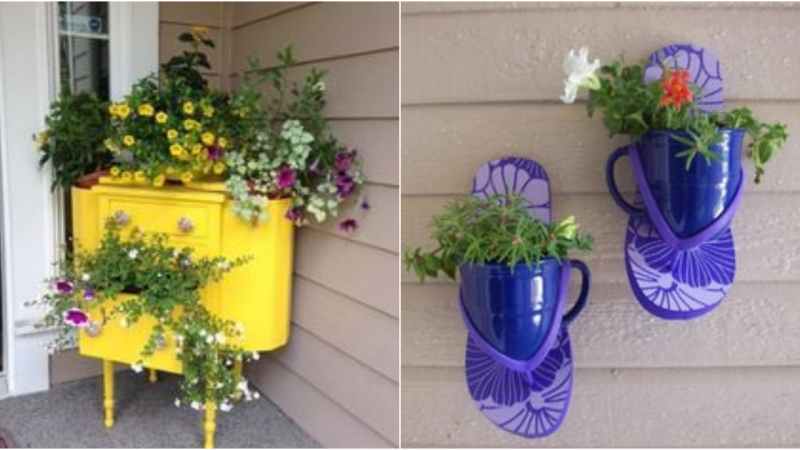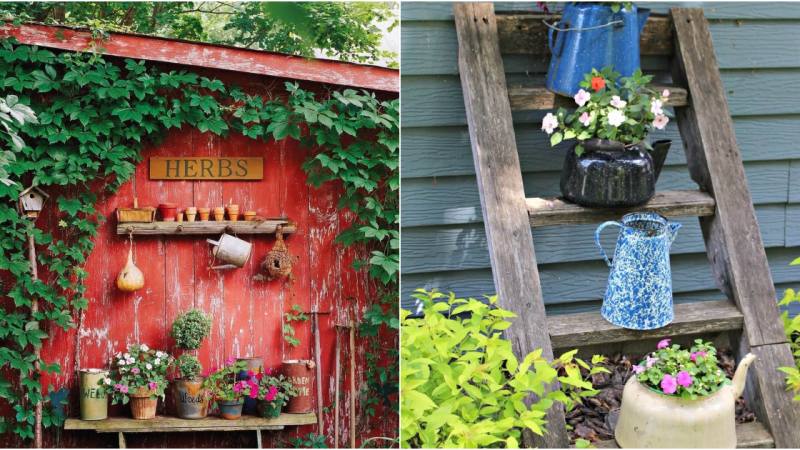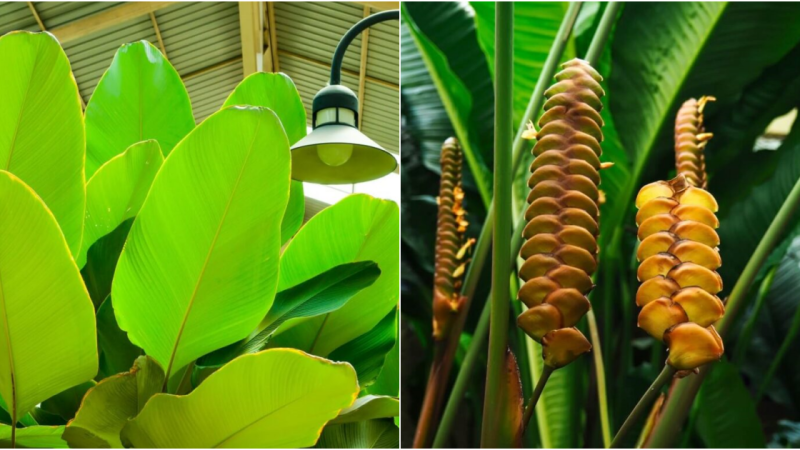Olga Losik’s Beautiful Garden in the South of Moscow Region

I have always been amazed by Olga Losik’s photographs – they are beautiful, harmonious, and professional, often winning top prizes in garden photography contests. I have long requested her to share her wonderful garden story, and finally, my dream has come true! I now pass the word to Olga.
“Our suburban village stretches along the banks of a small icy river with bubbling springs and a small reservoir. The surrounding fields and meadows, unfortunately, have been almost completely developed. Not far away is a forest, and during sunset, the sun dips into a strip of forest on the horizon, painting the sky in warm colors. My love for the nature of these places dates back to my childhood, which probably sparked my interest in gardening.

The center of the village, where our plot is located, has been inhabited for centuries. For nearly four hundred years, people cultivated the land and managed the farm here. Rusty horseshoes, coins, clay fragments, and other echoes of ancient times are often found when digging the soil. And the number of bricks extracted is beyond counting… Preparing planting holes sometimes feels like archaeological excavations. My grandmother planted the garden here in the 1970s. Then, in the 1990s, my mother managed to preserve it during challenging times for our family. Later on, my daughter spent her joyful summer days there, while I began my conscious gardening activities.
Several old apple trees, including the fragrant “Antonovka,” still yield a generous harvest. Whenever possible, I try to preserve the old trees as they form the backbone of the garden and provide a favorable microclimate. Along the grandmother’s shore, there are nameless peonies, phloxes, and I try to incorporate them into the new realities. I believe that careful preservation of history has helped maintain individuality and avoid the soullessness of modern construction.
Gradually, I added something of my own to the garden, something that interested me at the time. Along the perimeter, I planted ornamental shrubs that serve as a living hedge and serve as a backdrop for flower beds. These include variegated Siberian dogwood, guelder rose, red-leaved snowberry, lilac, weigela, and mock orange. Later, I added groups of conifers, trying to harmoniously integrate the plantings into the surrounding landscape.
Equally important in the arrangement was the comfort and convenience for the family. Consequently, we built retaining walls, installed pathways and parking areas, set up outdoor lighting, and created comfortable recreational zones. It was essential for me that the house and the garden became a gathering place for all members of our family, a place for meetings, communication, and relaxation in nature.
Our 15-acre plot is located on a western slope. The soil is well-cultivated loam. Moderate application of organic matter and mineral fertilizers helps maintain soil fertility at a sufficient level. There is no waterlogging, even after prolonged rainfall, as the groundwater is deep. In these conditions, it is possible to grow most ornamental plants, vegetables, and fruit crops.
The plot was divided into several functional zones. In front of the house, we created a decorative garden with a seating area. The center is open for viewing, featuring a small round lawn surrounded by mixed flower beds.
Here, roses, Japanese spiraeas, peonies, lilies, blue moor grass ‘Variegata,’ alliums, geums, and catmint thrive. To create a sense of seclusion, the seating area is enclosed on one side by a trellis covered with climbing roses ‘Pierre de Ronsard’ and ‘Maritim,’
and on the other side by an arbor with grapevines. They were handcrafted by my husband. Luxurious ‘Pierre de Ronsard’ is rightly considered one of the most beautiful climbing roses. However, it requires plenty of sunlight and warmth to unleash its full potential. The designated area meets these requirements, fully exposed to the south and protected from winds by apple trees and the trellis. There is enough snow for winter protection.
The grapevines were grown from cuttings taken from my husband’s parental plant. This variety once adorned his childhood home, holding sentimental value for him.
Along the main pathway leading from the gate to the house, we planted red-leaved maple, lilacs, and lilac bushes. A row of trimmed yews shields the fence, creating the visual effect of a small alley. In the foreground, magnificent herbaceous peony hybrids ‘Bartzella’ and ‘Canary Brilliants’ flaunt their carved foliage and beautiful yellow flowers. The old ‘Festiva Maxima’ peony is still thriving. In May, a large bush of tree peony blooms. In the lower tier, there are lungworts, primulas, meconopsis, and variegated morrow grass ‘Ice Dance.’ Tall bellflowers, echinaceas, daylilies, hostas, asters, and gentians thrive alongside lilacs.
I planted a ‘Horstmann’ juniper with its original crown shape at the entrance to the “alley.” I hope that as it matures, it will spread its incredible branches even wider and resemble a real garden guardian, a leshy.
The main paths are paved with paving stones and designed for everyday convenience. Additionally, winding paths with sandstone paving have been laid out. They are surrounded by freely shaped mixed borders, which add naturalness to the plantings and create a complex space. The plant selection here is also typical for a suburban garden: peonies, roses, hydrangeas, phlox, delphiniums, lilies, mixed with hostas, aconites, heliopsis, gillenia, geraniums, grasses, and palm sedge.
In spring, tulips and small bulbs bloom in small groups among the perennials, delighting the eye. Primroses, columbines, and aquilegias also add color to the garden.
In autumn, the garden adorns itself with brownish-yellow attire, adorned with bright spots of perennial asters, bugbanes, luxurious hydrangeas, late roses, and the greenery of conifers. It seems to me that autumn suits it very well.
Under the shade of old apple trees, I created a shade garden where my favorite primroses, violets, trilliums, lady’s slippers, sanguinaria, and a collection of hellebores grow. The fence in this area is decorated with shade-tolerant pulmonarias and neat rows of Martagon lilies. This is perhaps my favorite corner.
Not far from here, in a secluded and semi-shaded spot, there is a rocky crevice with a small embedded pond. It is constructed using limestone left over from an old foundation. The pond is framed with sandstone slabs. Various alpine plants have found their place on the rock: saxifrages, gentians, primroses, ramondas, and cushion-forming phloxes.
Surprisingly, the pond has become a highly sought-after spot for local birds. Crows diligently soak pieces of bread they find somewhere, thrushes feast on rowan berries and indulge in lively bathing. Agile wagtails hop across the stones in search of flies and mosquitoes. I purposely laid some flat slabs on the shore for the convenience of small birds coming to drink. Not far away, my husband hung a small birdhouse. To our delight, in the very first year, a pair of blue tits made it their home. We make an effort to feed the birds, especially in winter.
On the retaining wall in front of the house, there is a mix of conifers and hydrangeas. A pair of ground-covering roses called ‘Les Quatre Saisons,’ matching them in color, gracefully cascade from the wall, serving as an additional accent near the seating area.

On the south side of the house, I created another small alpine rockery for sun-loving plants. In the center, a mountain pine of the pumilio form grows, which I shape by pinching its young shoots and pruning. On this rockery, there are Lewisias, primroses, aquilegias, phloxes, bellflowers, Townsendias, and other alpines.
Behind the house is the private section with utility buildings, a vegetable garden, and a greenhouse.
Roses hold a special place in the garden. Some are incorporated into mixed flower beds, while others grow in dedicated rose gardens.
The rose garden along the eastern side of the house features tea-hybrid and floribunda roses. The roses are underplanted with a mix of heucheras and low-growing geraniums.
A row of English roses is planted alongside the pathway, with lavender, thyme, carnations, and wild thyme at their feet.
In a small nursery, I maintain seedlings of rare perennials, bulbs, and woody plants. Among them are species lilies, nomocharises, bugbanes, primroses, species peonies, and much more. It is an engaging activity that teaches me a lot and allows me to expand the plant diversity of the garden.
As the young plants grow, they find their place in the flower beds and alpine rockery. Some particularly valuable specimens remain in container culture. The nursery also houses a small collection of cultivars of rock garden primroses. During winter, I protect them using an airy and dry method.
I hope this brief tour of the suburban garden hasn’t been boring for you. Good luck in the upcoming gardening season!
Special thanks to Olga Losik for the fascinating story and beautiful photographs!






























